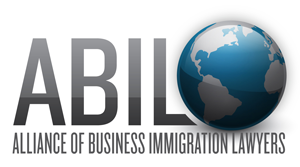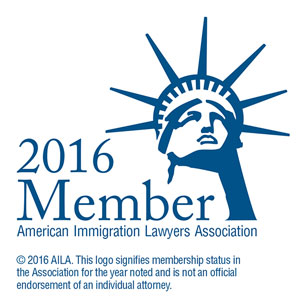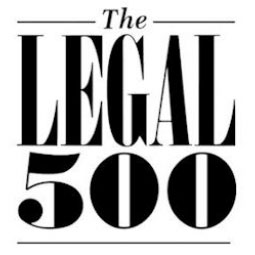Navigating the Immigration Maze in an Age of Fear and Hope
Immigration is one of the most complex areas of the law—so complex that even seasoned lawyers struggle to keep pace with shifting rules, changing interpretations, and unpredictable outcomes.
Yet despite this complexity, people continue to come. They come because the United States has long represented freedom, opportunity, and the promise of a better future. But our immigration system—deeply flawed as it is—too often stands in their way.
A System in Crisis
There are far too few legal pathways for people to come to the United States, whether to reunite with family or to work for employers who genuinely need their skills.
It is unconscionable that highly skilled Indian-born professionals must wait many decades for a green card. These individuals already have bona fide job offers. Their employers tested the U.S. labor market. Their labor certifications were approved. And still they wait—sometimes longer than a human lifetime.
We also see enormous delays in processing petitions for “immediate relatives”—spouses, parents, minor children—people who are supposed to have the most direct legal path. Add to this the unpredictability of visa stamping abroad, and families are thrown into needless uncertainty.
And then comes one of the most frustrating problems: the government repeatedly shifts the goalposts. For instance, a new public charge policy allows consular officers to deny visas simply because a person has common conditions like obesity or diabetes—a discriminatory and medically unsound expansion of the rule.
Let us not forget that the Trump administration even floated a $100,000 filing fee for H-1B petitions—another unmistakable signal that their objective is not fairness, but exclusion. It then sought to reinterpret and clarify, but caused more confusion. As a result of Trump’s attacks on the H-1B visa program that is widely used by Indian nationals, racists are now openly targeting Indian Americans.
Fear as Policy
As defective as the immigration system already is, President Trump has weaponized it further through cruelty. He rose to power demonizing immigrants, and since his second inauguration in January 2025, he has embraced that cruelty openly.
He empowered people like Stephen Miller and Kristi Noem to unleash ICE in unprecedented ways—detaining noncitizens for lawful speech that displeases the administration.
Foreign students at prestigious U.S. universities have been taken by masked ICE agents simply for protesting Israel’s military operation in Gaza, which has resulted in over 65,000 deaths.
Visas have been revoked for individuals who criticized the President, including Nobel laureates, or who voiced critical views of Charlie Kirk after his death. All such speech is protected by the First Amendment.
Even U.S. citizens have been caught in these sweeps, creating a level of fear this country has never experienced in modern times. America—once revered as a beacon of freedom—has not seen such weaponization of immigration power since its darkest moments.
Trump and some Republican politicians have openly threatened to deport naturalized citizens in the hope that they can denaturalize them. Mayor-elect Zohran Mamdani has been subjected to vile racist and Islamophobic attacks, all because his ascent represents immigrant power—and that terrifies those who have implemented policies to subjugate them and keep them in line.
This administration has repeatedly declared that even lawful permanent residents are merely “guests” who may be removed for speech that offends those in power. They portray immigrants as unwelcome, job-stealing, dangerous interlopers—despite the reality that immigrants are the backbone of the labor force in construction, agriculture, caregiving, technology, and countless other sectors.
They imagine an America without immigrants—a fantasy that has never existed and never will.
Authoritarianism Begins With Noncitizens
We must understand this clearly: Authoritarianism rarely begins with citizens. It begins with noncitizens.
Once the rights of immigrants are trampled, as that can be more easily achieved, this erosion expands outward. By the time citizens recognize the danger, the mechanisms of oppression are already in place.
This is why knowing our rights is essential. You do not have to speak to ICE if approached in the street. Agents need a judicial warrant—not an ICE-issued form—to arrest you.
And we need lawyers willing to defend these rights without fear. Lawyers should also be prepared to challenge the unconstitutional detentions of noncitizens through habeas corpus petitions in federal court.
The March 2025 White House memo attacking immigration lawyers and Big Law pro bono programs was designed to intimidate us. It echoes the famous line from Henry VI: “The first thing we do, let’s kill all the lawyers.”
The memo claimed lawyers were undermining national security merely for representing asylum seekers. But under the Immigration and Nationality Act, people fleeing persecution have an absolute right to file asylum claims. Ethical lawyers do not file fraudulent cases. Representing the vulnerable is not a threat to America—it is a reflection of America at its best.
The Path Forward
We must vote out politicians who fear-monger on immigration and lack the courage to reform the system. We need a rational immigration framework with more legal pathways to unite families and allow people to work in the US.
We must reject the false narrative that immigrants harm the country. The truth has always been clear: Immigrants are good for America.
The Parsi Parable: A Lesson for Our Time
When a group of Zoroastrian known as Parsis fled Persia and sought refuge in India over a thousand years ago, the local king sent them a vessel filled to the brim with milk, signaling that his land was full.
The Parsi leader asked for a spoonful of sugar. He stirred it gently into the milk without spilling a drop, saying: “Like this sugar, we will sweeten your land without displacing anyone.”
The king understood, and the Parsis went on to enrich India in immeasurable ways— economically, culturally, intellectually, and spiritually.
That story captures everything immigration truly represents:
Newcomers do not weaken a society—they enrich it.
They do not overflow the vessel—they transform it for the better.
Immigrant Power Today
Zohran Mamdani’s victory in New York is one such modern testament. In his words:
“New York will remain a city of immigrants, a city built by immigrants, powered by immigrants, and as of tonight led by an immigrant.”
That is the power of immigrant communities.
That is how we resist authoritarianism.
And that is why we must continue to fight—for justice, for humanity, and for the sweetness that immigrants, like sugar in milk, bring to every nation that welcomes them.
(This blog is based Cyrus Mehta’s prepared remarks as a keynote speaker at an IndiXspark event on November 15, 2025 in New York City)




